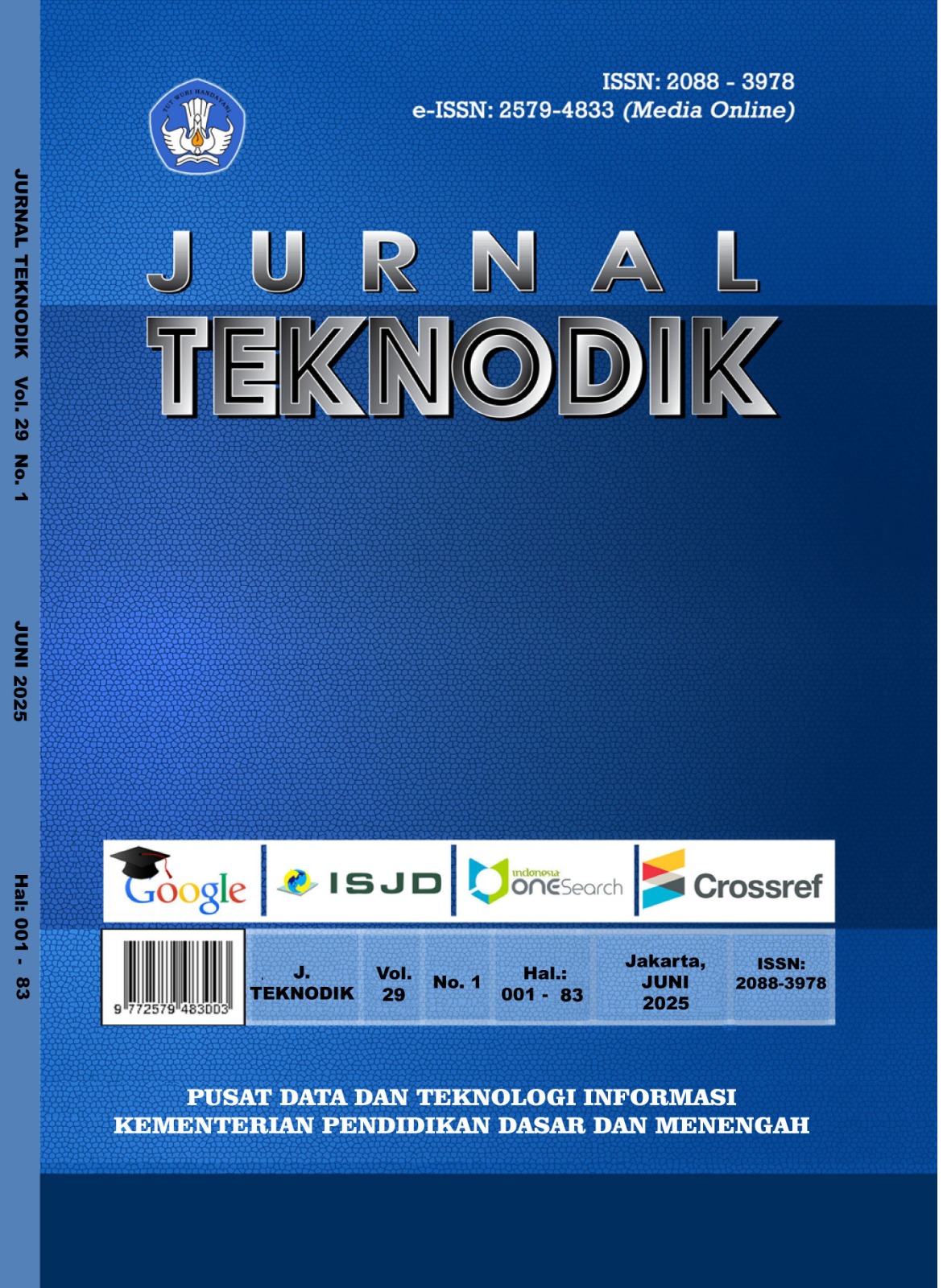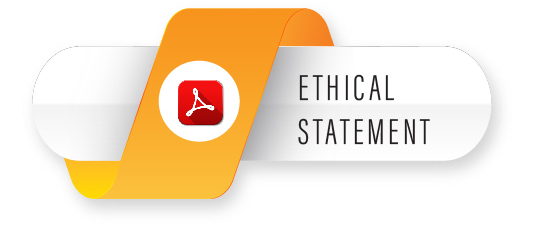Harnessing Virtual Reality For Geoscience Education: Unveiling The Pedagogical Potential Of Ijen Crater's Volcanic Landscape
Keywords:
VR 6 DOF, Unity, Ijen Crater, GeoscienceAbstract
Virtual Reality systems in geography education are generally limited to 3DoF, allowing only rotational movement without translation. This study aims to develop an innovative 6DoF VR learning media using Unity to simulate volcanic processes, ecosystems, and disaster mitigation in the Ijen Crater. The “KawahIjen” VR is designed to provide an immersive and interactive learning experience, overcoming the limitations of conventional media. The research employs a Research and Development (R&D) method, adapting the Hannafin and Peck model, which includes needs analysis, design, development, and implementation stages. Results show the VR has a high usability level, with a System Usability Scale (SUS) score of 81. The 6DoF feature allows users to interact with and explore the virtual environment freely, offering deeper learning experiences. Additionally, it serves as a potential educational tool for disaster mitigation, especially for remote communities with limited access to Ijen. This study contributes to innovative and effective geoscience learning media development.
Sistem VirtualReality dalam pendidikan geografi umumnya masih berbasis 3DoF, yang hanya memungkinkan rotasi tanpa translasi. Penelitian ini bertujuan mengembangkan media pembelajaran VR 6DoF inovatif menggunakan Unity untuk mensimulasikan proses vulkanik, ekosistem, dan mitigasi bencana di Kawah Ijen. VR "Kawah Ijen" dirancang agar imersif dan interaktif, serta mengatasi keterbatasan media konvensional. Metode yang digunakan adalah Research and Development (R&D), mengadaptasi model Hannafin dan Peck dengan tahapan analisis kebutuhan, desain, pengembangan, dan implementasi. Hasil penelitian menunjukkan media ini memiliki tingkat keterpakaian sangat baik dengan skor SUS 81. Fitur 6DoF memungkinkan pengguna berinteraksi dan mengeksplorasi lingkungan virtual secara bebas, sehingga pengalaman belajar menjadi lebih mendalam. Selain itu, VR ini berfungsi sebagai alat edukasi mitigasi bencana yang potensial, khususnya bagi masyarakat di daerah terpencil yang sulit mengakses Kawah Ijen. Penelitian ini berkontribusi pada pengembangan media pembelajaran geosains yang inovatif dan efektif
References
Abdillah, Y. (2021). Resources Innovation Towards Industrialization and Downstream Policy in Tourism Products. Proceedings of the 3rd Annual International Conference on Public and Business Administration (AICoBPA 2020), 191. https://doi.org/10.2991/aebmr.k.210928.029
Abdurrachman, M. (2023). INTERPRETATION OF TECTONIC SETTING AND MAGMATISM FOR EDUCATION AND GEOTOURISM IN IJEN UNESCO GLOBAL GEOPARK, EAST JAVA, INDONESIA. BULLETIN OF GEOLOGY, 7(3), 2023. https://doi.org/10.5614/bull.geol.2023.7.3.4
Aliya Fatimah, A. Y. E. (2021). Towards Family Economic Sustainability: The Transformation of Traditional Sulphur Miners in Ijen Crater. Psychology and Education Journal, 58(1). https://doi.org/10.17762/pae.v58i1.875
Andaru, R., Cahyono, B. K., Riyadi, G., Istarno, Djurdjani, Ramadhan, G. R., & Tuntas, S. (2019). The combination of terrestrial Lidar and UAV photogrammetry for interactive architectural heritage visualization using unity 3D game engine. International Archives of the Photogrammetry, Remote Sensing and Spatial Information Sciences - ISPRS Archives, 42(2/W17). https://doi.org/10.5194/isprs-archives-XLII-2-W17-39-2019
Asgary, A., Bonadonna, C., & Frischknecht, C. (2020). Simulation and Visualization of Volcanic Phenomena Using Microsoft Hololens: Case of Vulcano Island (Italy). IEEE Transactions on Engineering Management, 67(3). https://doi.org/10.1109/TEM.2019.2932291
Atsikpasi, P., & Fokides, E. (2022). A scoping review of the educational uses of 6DoF HMDs. Virtual Reality, 26(1). https://doi.org/10.1007/s10055-021-00556-9
Barbot, B., Kaufman, J. C., & Myszkowski, N. (2023). Creativity with 6 Degrees of Freedom: Feasibility Study of Visual Creativity Assessment in Virtual Reality. Creativity Research Journal, 35(4). https://doi.org/10.1080/10400419.2023.2193040
Brooke, J. (1996). SUS—a quick and dirty usability scale. 1996. In Usability evaluation in industry (Vol. 189, Issue 194).
Chandrasekera, T., Fernando, K., & Puig, L. (2019). Effect of Degrees of Freedom on the Sense of Presence Generated by Virtual Reality (VR) Head-Mounted Display Systems: A Case Study on the Use of VR in Early Design Studios. Journal of Educational Technology Systems, 47(4). https://doi.org/10.1177/0047239518824862
Checa, D., & Bustillo, A. (2020). A review of immersive virtual reality serious games to enhance learning and training. Multimedia Tools and Applications, 79(9–10). https://doi.org/10.1007/s11042-019-08348-9
Farid Prasetyo Manggala Putra, Puji Setyaningsih, & Danang Ari Santoso. (2020). Analisis Persiapan Fisik Pendakian Gunung Ijen Dan Gunung Ranti Di Kabupaten Banyuwangi. Jurnal Pendidikan Jasmani (JPJ), 1(2). https://doi.org/10.55081/jpj.v1i2.134
Gross, D., & Gumhold, S. (2021). Advanced Rendering of Line Data with Ambient Occlusion and Transparency. IEEE Transactions on Visualization and Computer Graphics, 27(2). https://doi.org/10.1109/TVCG.2020.3028954
Guna, Agung, & Pudjawan. (2019). Game Education Mata Pelajaran Matematika Untuk Siswa Kelas IV SD Negeri 1 Paket. Jurnal Edutech Undiksha, 7(2).
Habibiyah, Z. M., Masruroh, H., & Putra, A. K. (2023). Analyzing the Needs for Augmented Reality-Based Learning Media in Geography Education: A Case Study of Landform Material. https://doi.org/10.2991/978-2-38476-168-5_3
Hannafin, M. J., Peck, L. L. (1998). The design development and education ofinstructional software. Edupedia, 5(1).
Haryana, M. R. A., Warsono, S., Achjari, D., & Nahartyo, E. (2022). Virtual reality learning media with innovative learning materials to enhance individual learning outcomes based on cognitive load theory. International Journal of Management Education, 20(3). https://doi.org/10.1016/j.ijme.2022.100657
Hidayat, A. N., & Yuhana, U. L. (2023). Evaluasi Desain Antarmuka Website Sekolah Menengah Atas Menggunakan Metode Heuristic Evaluation. Jurnal Rekayasa Industri (JRI), 5(2). https://doi.org/10.37631/jri.v5i2.944
Huang, K. T., Ball, C., Francis, J., Ratan, R., Boumis, J., & Fordham, J. (2019). Augmented versus virtual reality in education: An exploratory study examining science knowledge retention when using augmented reality/virtual reality mobile applications. Cyberpsychology, Behavior, and Social Networking, 22(2). https://doi.org/10.1089/cyber.2018.0150
Ikbal, M. S., Ramadoss, V., & Zoppi, M. (2021). Dynamic Pose Tracking Performance Evaluation of HTC Vive Virtual Reality System. IEEE Access, 9. https://doi.org/10.1109/ACCESS.2020.3047698
Jost, T. A., Drewelow, G., Koziol, S., & Rylander, J. (2019). A quantitative method for evaluation of 6 degree of freedom virtual reality systems. Journal of Biomechanics, 97. https://doi.org/10.1016/j.jbiomech.2019.109379
Kamińska, D., Sapiński, T., Wiak, S., Tikk, T., Haamer, R. E., Avots, E., Helmi, A., Ozcinar, C., & Anbarjafari, G. (2019). Virtual reality and its applications in education: Survey. Information (Switzerland), 10(10). https://doi.org/10.3390/info10100318
Keil, J., Edler, D., Schmitt, T., & Dickmann, F. (2021). Creating Immersive Virtual Environments Based on Open Geospatial Data and Game Engines. KN - Journal of Cartography and Geographic Information, 71(1). https://doi.org/10.1007/s42489-020-00069-6
Masruroh, H., Sumarmi, S., Putra, A., & Rachmadian, R. H. (2023). Developing Interactive Virtual Reality as a Tech-Based Learning Media to Improve Students’ Geoheritage Comprehension. International Journal of Learning Technology, 1(1). https://doi.org/10.1504/ijlt.2023.10057649
Matthews, S., Uribe-Quevedo, A., & Theodorou, A. (2020). Rendering Optimizations for Virtual Reality Using Eye-Tracking. Proceedings - 2020 22nd Symposium on Virtual and Augmented Reality, SVR 2020. https://doi.org/10.1109/SVR51698.2020.00066
M. Bagher, M., Sajjadi, P., Wallgrün, J. O., LaFemina, P., & Klippel, A. (2023). Virtual reality for geospatial education: immersive technologies enhance sense of embodiment. Cartography and Geographic Information Science, 50(3). https://doi.org/10.1080/15230406.2022.2122569
Mulders, M., Buchner, J., & Kerres, M. (2020). A Framework for the Use of Immersive Virtual Reality in Learning Environments. International Journal of Emerging Technologies in Learning, 15(24). https://doi.org/10.3991/ijet.v15i24.16615
Nagta, A., Sharma, B., Sheena, & Sharma, A. (2022). Oculus: A New Dimension to Virtual Reality. International Conference on Automation, Computing and Renewable Systems, ICACRS 2022 - Proceedings. https://doi.org/10.1109/ICACRS55517.2022.10029200
Nielsen, J. (1995). Severity Ratings for Usability Problems: Article by Jakob Nielsen. In Nielsen Norman Group.
Nusrat, F., Hassan, F., Zhong, H., & Wang, X. (2021). How developers optimize virtual reality applications: A study of optimization commits in open source unity projects. Proceedings - International Conference on Software Engineering. https://doi.org/10.1109/ICSE43902.2021.00052
Occhipinti, S. (2025). Motivation for Learning Geosciences: The Teaching-Learning Process-Analysis, Evaluations, and Proposals. www.intechopen.com
Pan, X., & Hamilton, A. F. de C. (2018). Why and how to use virtual reality to study human social interaction: The challenges of exploring a new research landscape. British Journal of Psychology, 109(3). https://doi.org/10.1111/bjop.12290
Park, S.-S., & Kim, J.-H. (2022). Study of Scene Directing with Cinemachine. International Journal of Contents, 18(1).
Popp, C., & Murphy, D. T. (2022). Creating Audio Object-Focused Acoustic Environments for Room-Scale Virtual Reality. Applied Sciences (Switzerland), 12(14). https://doi.org/10.3390/app12147306
Prasetya, F., Fajri, B. R., Wulansari, R. E., Primawati, & Fortuna, A. (2023). Virtual Reality Adventures as an Effort to Improve the Quality of Welding Technology Learning During a Pandemic. International Journal of Online and Biomedical Engineering, 19(2). https://doi.org/10.3991/ijoe.v19i02.35447
Pratama, A., Bijaksana, S., Abdurrachman, M., & Santoso, N. A. (2018). Rock magnetic, petrography, and geochemistry studies of lava at the ijen volcanic complex (IVC), Banyuwangi, East Java, Indonesia. Geosciences (Switzerland), 8(5). https://doi.org/10.3390/geosciences8050183
Putra, A. K., Sumarmi, Bachri, S., Khalidy, D. Al, & Huda, I. A. S. (2023). Spatial Acumen in the Digital Age: The Transformative Power of STEM-Enriched Mobile Textbooks in Geography. International Journal of Interactive Mobile Technologies, 17(23). https://doi.org/10.3991/IJIM.V17I23.45949
Putra, B. S. (2014). Solidaritas Kehidupan Penambang Belerang Tradisional Di Kawah Ijen. Sosial Dan Politik, 9(116).
Radianti, J., Majchrzak, T. A., Fromm, J., & Wohlgenannt, I. (2020). A systematic review of immersive virtual reality applications for higher education: Design elements, lessons learned, and research agenda. Computers and Education, 147. https://doi.org/10.1016/j.compedu.2019.103778
Sanjaya, A. W., Mukti, M., Febrian, A. W., & Novitasari, H. (2019). A Study of Tourist Attraction Development Policy and Environmental Conservation in the Ijen Crater Natural Park. TIJAB (The International Journal of Applied Business), 3(2). https://doi.org/10.20473/tijab.v3.i2.2019.87-106
Sari, A. N., Supeno, S., & Wahyuni, D. (2023). Identifikasi Tumbuhan Lumut (Bryophyta) Di Kawasan Ijen Geopark dan Pemanfaatannya Sebagai Sumber Belajar. Diklabio: Jurnal Pendidikan Dan Pembelajaran Biologi, 7(2). https://doi.org/10.33369/diklabio.7.2.174-186
Scher, S., Williams-Jones, A. E., & Williams-Jones, G. (2013). Fumarolic activity, acid-sulfate alteration, and high sulfidation epithermal precious metal mineralization in the crater of Kawah Ijen volcano, Java, Indonesia. Economic Geology, 108(5). https://doi.org/10.2113/econgeo.108.5.1099
Scorpio, M., Laffi, R., Masullo, M., Ciampi, G., Rosato, A., Maffei, L., & Sibilio, S. (2020). Virtual reality for smart urban lighting design: Review, applications and opportunities. In Energies (Vol. 13, Issue 15). https://doi.org/10.3390/en13153809
Slater, M., & Sanchez-Vives, M. V. (2016). Enhancing our lives with immersive virtual reality. In Frontiers Robotics AI (Vol. 3, Issue DEC). https://doi.org/10.3389/frobt.2016.00074
Stahler, R. W. (1992). Physical geography. Wiley
Supriyanto, B. F., Ramdani, F., & Supianto, A. A. (2020). Measuring the accuracy of coordinates and elevation of Google earth: How Google earth provide accuracy in location points and elevation. ACM International Conference Proceeding Series. https://doi.org/10.1145/3427423.3427448
Susetyo, S. H., Abidin, A. U., Nagaya, T., Kato, N., & Matsui, Y. (2024). Environmental health risk assessment and acute effects of sulfur dioxide (SO2) inhalation exposure on traditional sulfur miners at Ijen Crater Volcano, Indonesia. Toxicology Reports, 13. https://doi.org/10.1016/j.toxrep.2024.101772
Sweller, J. (1988). Cognitive load during problem solving: Effects on learning. Cognitive Science, 12(2). https://doi.org/10.1016/0364-0213(88)90023-7
Syahbudin, A. (2019). Innovation in Interdisciplinary Subject for Preserving Mountainous Forest Ecosystems. https://doi.org/10.2991/iceri-18.2019.51
Taher, M. R., Abdurrachman, M., Kurniawan, I. A., Suparka, E., Susanto, A., & Putra, H. E. (2023). Volcano-Stratigraphy of Anak Krakatau Volcanic Complex (Indonesia) and Comparison Between the 2018 Anak Krakatau Eruption and the 1883 Krakatau Eruption. Advances in Science, Technology and Innovation. https://doi.org/10.1007/978-3-031-43744-1_16
Tytarenko, M. (2023). Optimizing Immersion: Analyzing Graphics and Performance Considerations in Unity3D VR Development. Asian Journal of Research in Computer Science, 16(4). https://doi.org/10.9734/ajrcos/2023/v16i4374
Udeozor, C., Chan, P., Russo Abegão, F., & Glassey, J. (2023). Game-based assessment framework for virtual reality, augmented reality and digital game-based learning. International Journal of Educational Technology in Higher Education, 20(1). https://doi.org/10.1186/s41239-023-00405-6
Ustun, V., Rosenbloom, P. S., Sajjadi, S., & Nuttall, J. (2018). Controlling Synthetic Characters in Simulations: A Case for Cognitive Architectures and Sigma. ArXiv Preprint ArXiv:2101.02231, 18205.
Viola, I., Subramanyam, S., Li, J., & Cesar, P. (2022). On the impact of VR assessment on the quality of experience of highly realistic digital humans. Quality and User Experience, 7(1). https://doi.org/10.1007/s41233-022-00050-3
Virgiawan, D. B. (2020). ANCAMAN ERUPSI KAWAH IJEN TERHADAP MASYARAKAT LERENG IJEN (KABUPATEN BONDOWOSO). ASANKA: Journal of Social Science And Education, 1(1). https://doi.org/10.21154/asanka.v1i1.1945
Vlachogianni, P., & Tselios, N. (2022). Perceived usability evaluation of educational technology using the System Usability Scale (SUS): A systematic review. Journal of Research on Technology in Education, 54(3). https://doi.org/10.1080/15391523.2020.1867938
Wan, T., Wei, Y., Shi, R., Shen, J., Kristensson, P. O., Atkinson, K., & Liang, H. N. (2024). Design and Evaluation of Controller-Based Raycasting Methods for Efficient Alphanumeric and Special Character Entry in Virtual Reality. IEEE Transactions on Visualization and Computer Graphics, 30(9). https://doi.org/10.1109/TVCG.2024.3349428
Waschk, A., & Krüger, J. (2022). Embracing Raycasting for Virtual Reality. Computer Science Research Notes, 3201(2022). https://doi.org/10.24132/CSRN.3201.16
Wate, P., Srivastav, S. K., Saran, S., & Murthy, Y. V. N. K. (2013). Formulation of hierarchical framework for 3D-GIS data acquisition techniques in context of Level-of-Detail (LoD). 2013 IEEE 2nd International Conference on Image Information Processing, IEEE ICIIP 2013. https://doi.org/10.1109/ICIIP.2013.6707573
Widowati, S., Suryawan Wiranatha, A., & Bagus Suryawan, I. (2023). How to Develop Ecotourism in Ijen Banyuwangi Crater ? Interdiciplinary Journal and Hummanity (INJURITY), 2(5). https://doi.org/10.58631/injurity.v2i5.63
Wildani, A., Maryanto, S., Santoso, D. R., & Triastuty, H. (2023). An Investigation of the Volcanic Tremor of Ijen Volcano in East Java-Indonesia: A Post-Critical Case Study in 2012. International Journal of Design and Nature and Ecodynamics, 18(2). https://doi.org/10.18280/ijdne.180212
Yang, Y., Meng, W., & Zhu, S. (2020). A Digital Twin Simulation Platform for Multi-rotor UAV. 2020 7th International Conference on Information, Cybernetics, and Computational Social Systems, ICCSS 2020. https://doi.org/10.1109/ICCSS52145.2020.9336872
Yuliani, E., Supeno, S., & Ridlo, Z. R. (2023). Identifikasi Tumbuhan Berbiji (Spermatophyta) di Kawasan Ijen Geopark Sebagai Sumber Belajar Biologi. Briliant: Jurnal Riset Dan Konseptual, 8(4). https://doi.org/10.28926/briliant.v8i4.1252
Zaennudin, A., Wahyudin, D., Surmayadi, M., & Kusdinar, E. (2012). Prakiraan bahaya letusan Gunung Api Ijen Jawa Timur. Jurnal Lingkungan Dan Bencana Geologi, 3(2).
Zhao, J., Sensibaugh, T., Bodenheimer, B., McNamara, T. P., Nazareth, A., Newcombe, N., Minear, M., & Klippel, A. (2020). Desktop versus immersive virtual environments: effects on spatial learning. Spatial Cognition and Computation, 20(4). https://doi.org/10.1080/13875868.2020.1817925
Zhao, J., Wallgrün, J. O., LaFemina, P. C., Normandeau, J., & Klippel, A. (2019). Harnessing the power of immersive virtual reality - visualization and analysis of 3D earth science data sets. Geo-Spatial Information Science, 22(4). https://doi.org/10.1080/10095020.2019.1621544
Downloads
Published
How to Cite
Issue
Section
Citation Check
License

This work is licensed under a Creative Commons Attribution-NonCommercial-ShareAlike 4.0 International License.
Please download and complete the Form, Copyright Transfer, and Ethics Statement Form. The following is provided at the time of submitting the text (Upload Additional Files):










